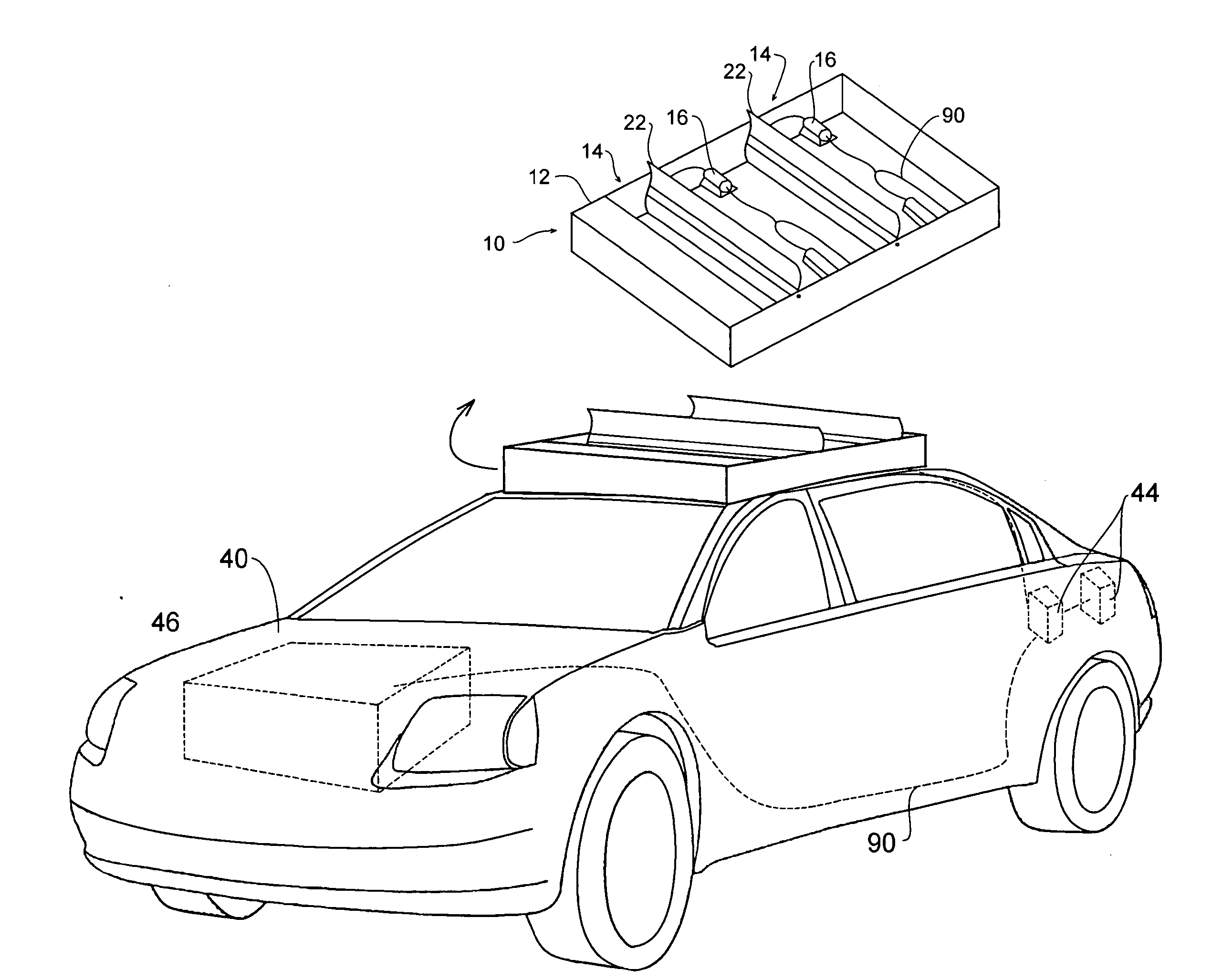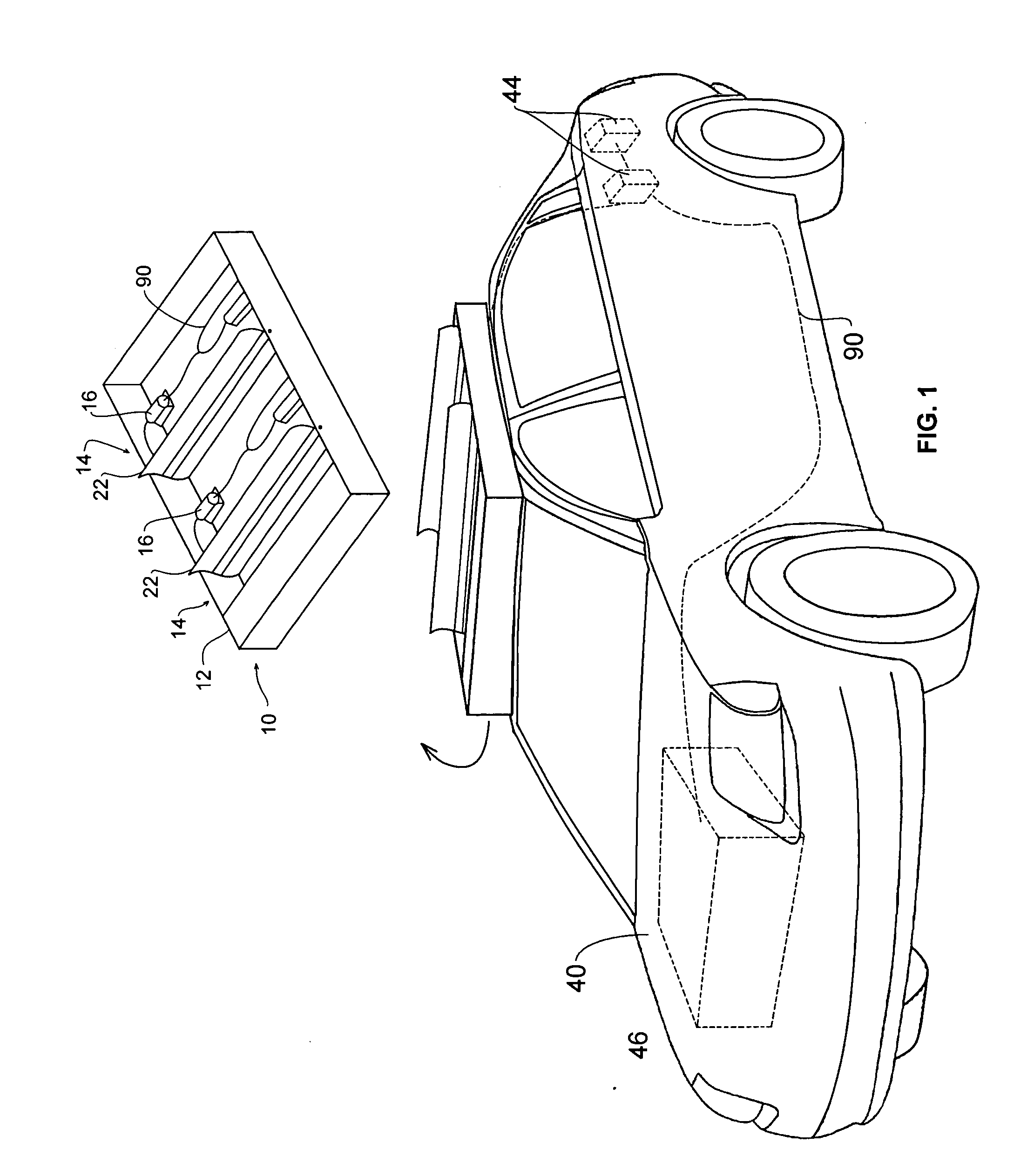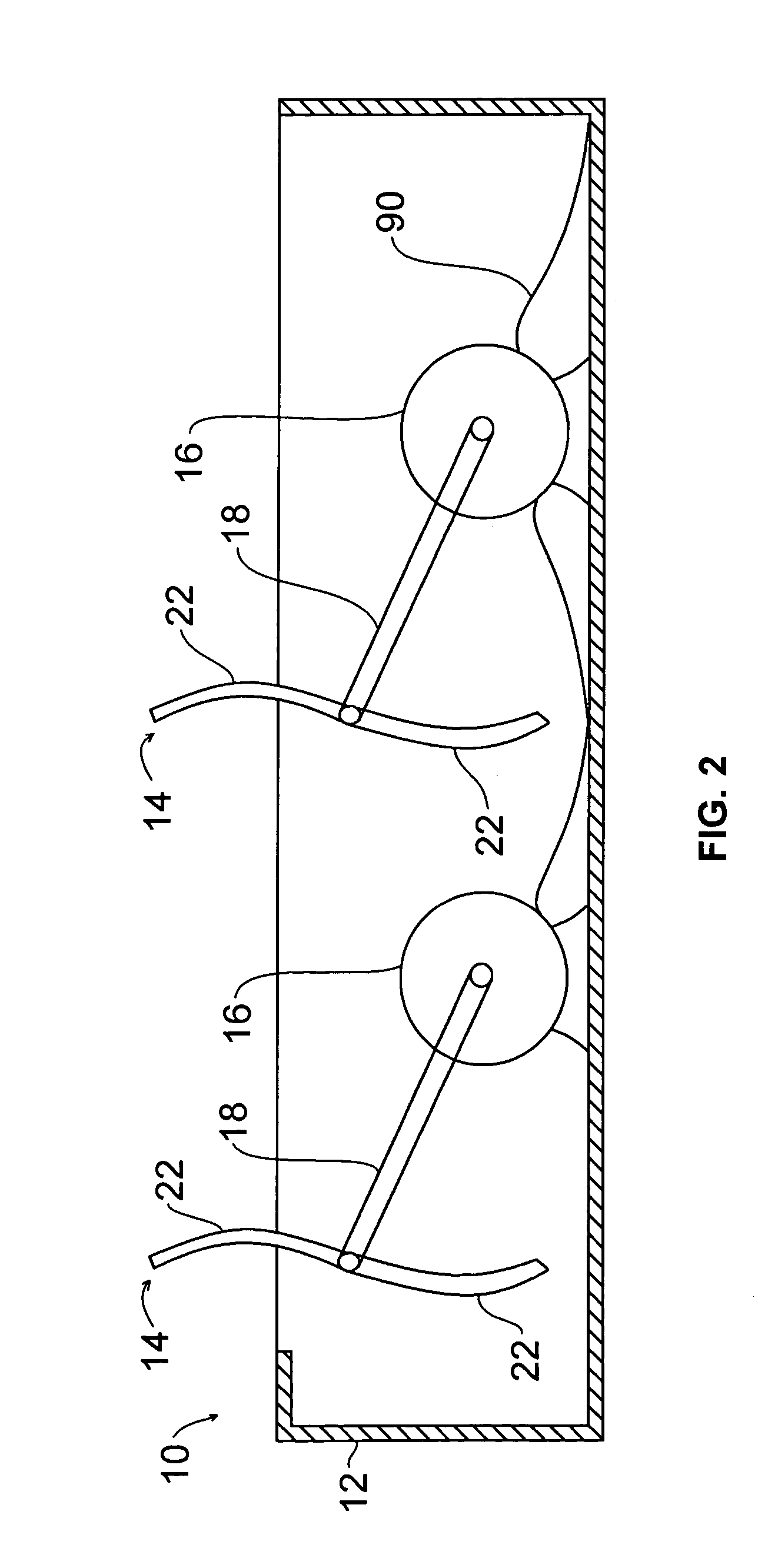Current powered vehicle
a current-powered vehicle and vehicle technology, applied in the direction of propulsion parts, transportation and packaging, propulsion power supply, etc., can solve the problems of increasing air pollution, increasing the cost of fossil fuels, and increasing the pollution of vehicles, so as to reduce the pollution of vehicles and reduce the emissions of vehicles
- Summary
- Abstract
- Description
- Claims
- Application Information
AI Technical Summary
Benefits of technology
Problems solved by technology
Method used
Image
Examples
Embodiment Construction
[0031] Illustrative embodiments of the power system and its components and placement on an example vehicle according to the present invention are shown in FIGS. 1 through 15. Although vehicle 40 as shown in the figures is an automobile, watercraft or train, it is understood that power system 10 may be used or installed on any vehicle, including trucks, trailers, aircraft and the like. Further, while power system 10 primarily is shown to be on the top or roof of vehicle 40, it is understood that power system, or various components thereof such as fan units 14 can be on the sides of vehicle 40. While the invention is described herein in conjunction with the exemplary and preferred embodiments, it will be understood that the invention is not limited to these embodiments.
[0032] Referring now to FIG. 1, a perspective view of one embodiment of the invention is shown installed on a landcraft. Vehicle 40 has a conventional electrically powered, a hybrid electrically / gasoline powered, or ot...
PUM
 Login to View More
Login to View More Abstract
Description
Claims
Application Information
 Login to View More
Login to View More - R&D
- Intellectual Property
- Life Sciences
- Materials
- Tech Scout
- Unparalleled Data Quality
- Higher Quality Content
- 60% Fewer Hallucinations
Browse by: Latest US Patents, China's latest patents, Technical Efficacy Thesaurus, Application Domain, Technology Topic, Popular Technical Reports.
© 2025 PatSnap. All rights reserved.Legal|Privacy policy|Modern Slavery Act Transparency Statement|Sitemap|About US| Contact US: help@patsnap.com



